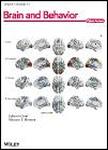版权所有:内蒙古大学图书馆 技术提供:维普资讯• 智图
内蒙古自治区呼和浩特市赛罕区大学西街235号 邮编: 010021

作者机构:Dalhousie Univ Dept Psychiat Halifax NS Canada Dalhousie Univ Fac Comp Sci Halifax NS Canada McMaster Univ Dept Psychol Neurosci & Behav Hamilton ON Canada McGill Univ Montreal Neurol Inst Dept Neurol & Neurosurg Montreal PQ Canada Univ Haifa Fac Nat Sci Sagol Dept Neurobiol Haifa Israel
出 版 物:《BRAIN AND BEHAVIOR》 (Brain Behav.)
年 卷 期:2025年第15卷第1期
页 面:e70209页
核心收录:
基 金:Research Nova Scotia (RNS) [NHIG-2021-1931]
主 题:bipolar disorder CA3 computational modeling lithium
摘 要:Introduction: Patients with bipolar disorder (BD) demonstrate episodic memory deficits, which may be hippocampal-dependent and may be attenuated in lithium responders. Induced pluripotent stem cell-derived CA3 pyramidal cell-like neurons show significant hyperexcitability in lithium-responsive BD patients, while lithium nonresponders show marked variance in hyperexcitability. We hypothesize that this variable excitability will impair episodic memory recall, as assessed by cued retrieval (pattern completion) within a computational model of the hippocampal CA3. Methods: We simulated pattern completion tasks using a computational model of the CA3 with different degrees of pyramidal cell excitability variance. Since pyramidal cell excitability variance naturally leads to a mix of hyperexcitability and hypoexcitability, we also examined what fraction (hyper- vs. hypoexcitable) was predominantly responsible for pattern completion errors in our model. Results: Pyramidal cell excitability variance impaired pattern completion (linear model beta = -2.00, SE = 0.03, p 0.001). The effect was invariant to all other parameter settings in the model. Excitability variance, specifically hyperexcitability, increased the number of spuriously active neurons, increasing false alarm rates and producing pattern completion deficits. Excessive inhibition also induces pattern completion deficits by limiting the number of correctly active neurons during pattern retrieval. Conclusions: Excitability variance in CA3 pyramidal cell-like neurons observed in lithium nonresponders may predict pattern completion deficits in these patients. These cognitive deficits may not be fully corrected by medications that minimize excitability. Future studies should test our predictions by examining behavioral correlates of pattern completion in lithium-responsive and -nonresponsive BD patients.